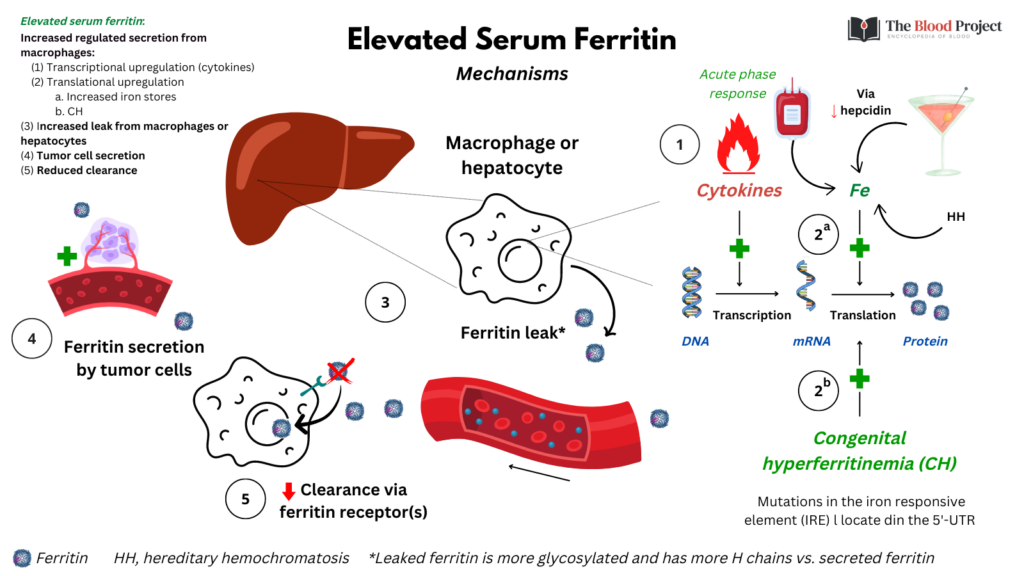Serum Ferritin
Prev
1 / 0 Next
Prev
1 / 0 Next
In clinical practice, we often order a serum ferritin test. What are we actually measuring? Ferritin is an intracellular storage protein. What is it doing in the serum? Are serum and intracellular ferritin one and the same? Is their structure the same? Are they derived from the same genes? Are they under similar regulatory mechanisms?
- The serum contains small amounts of ferritin:12
- Serum ferritin can be measured using:
- Immunoassays (enzyme-linked immunosorbent assay [ELISA])
- Immunochemiluminescence
- Immunoturbidometric assay
- Ferritin may enter the blood by:
- Non-classical secretory pathway (especially in macrophages)
- Leakage from damaged cells
- In healthy individuals, serum ferritin levels are directly proportional to levels of iron storage in the body. Serum ferritin is:5
- Decreased in iron deficiency6
- Increased in states of iron surplus/overload
- Serum ferritins may also be elevated in:
- Inflammation, including cancer
- Liver disease
- Alcohol use disorder
- Hyperferritinemia-cataract syndrome, characterized by mutations within the iron-responsive element of L-ferritin, which renders ferritin L chain mRNA unresponsive to the inhibitory effect of IRF binding to IRE in presence of iron deficiency.
- The role/function of serum ferritin is unknown, but may include:
- Iron delivery7
- Angiogenesis
- Inflammation/immunity

Prev
1 / 0 Next
